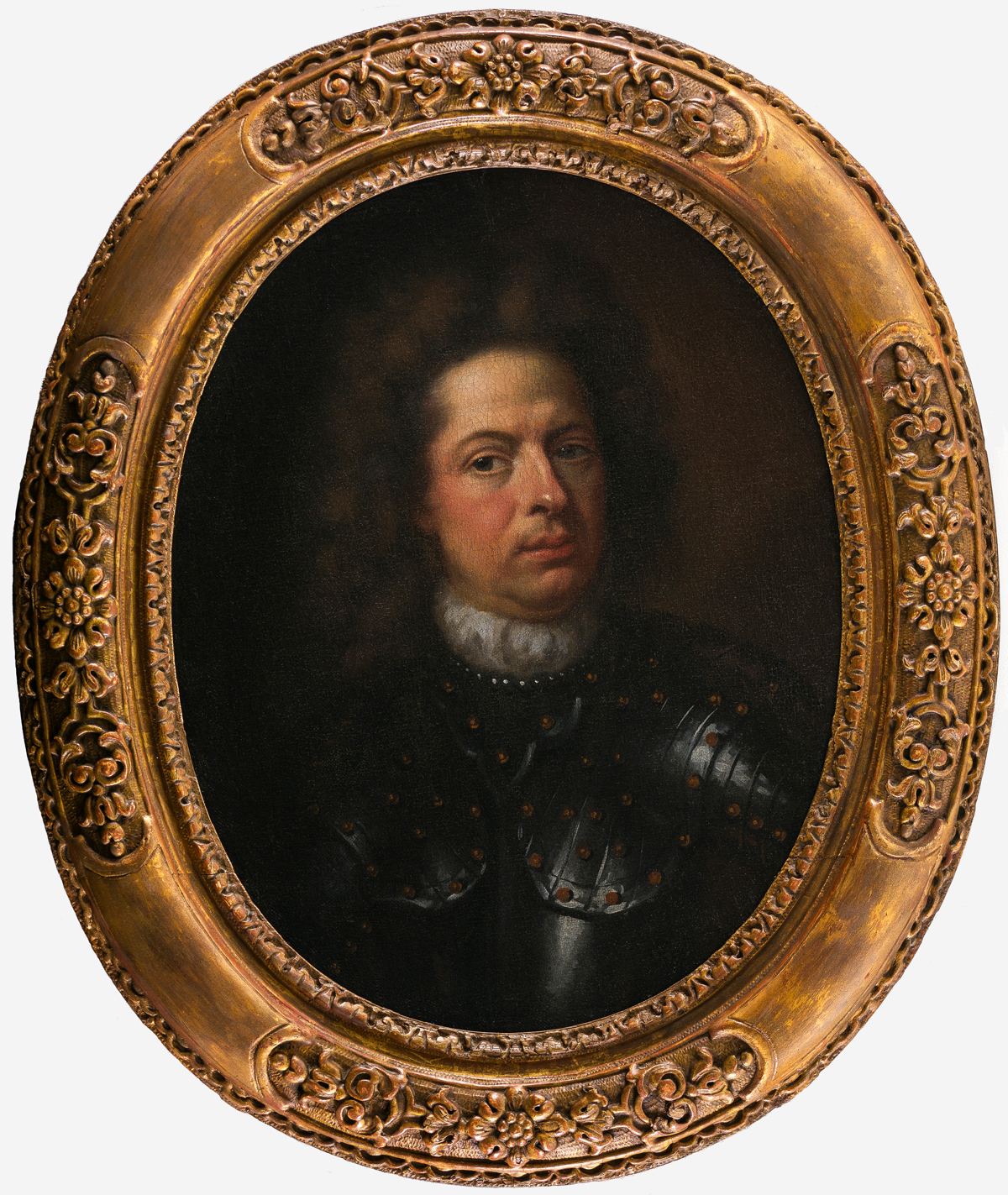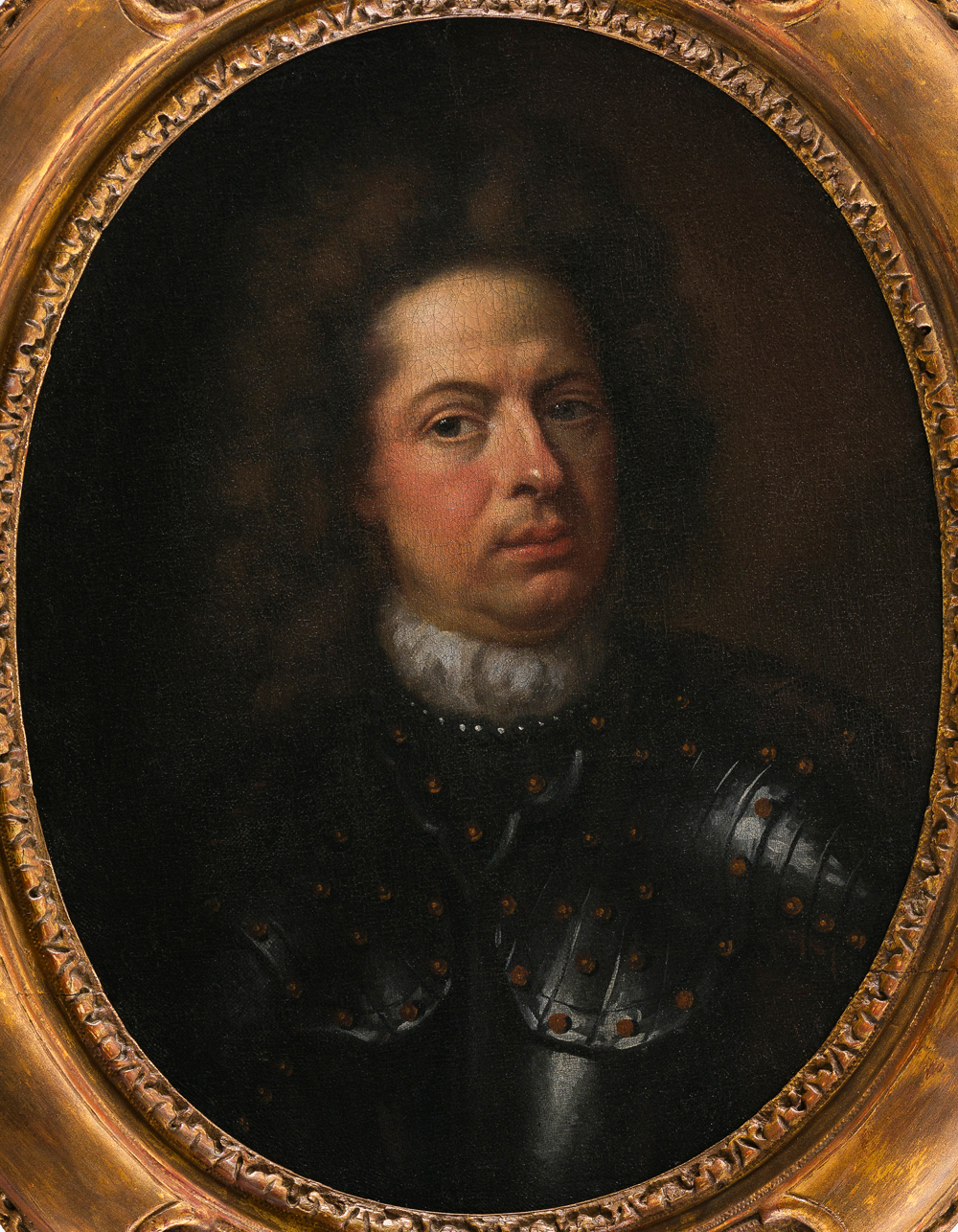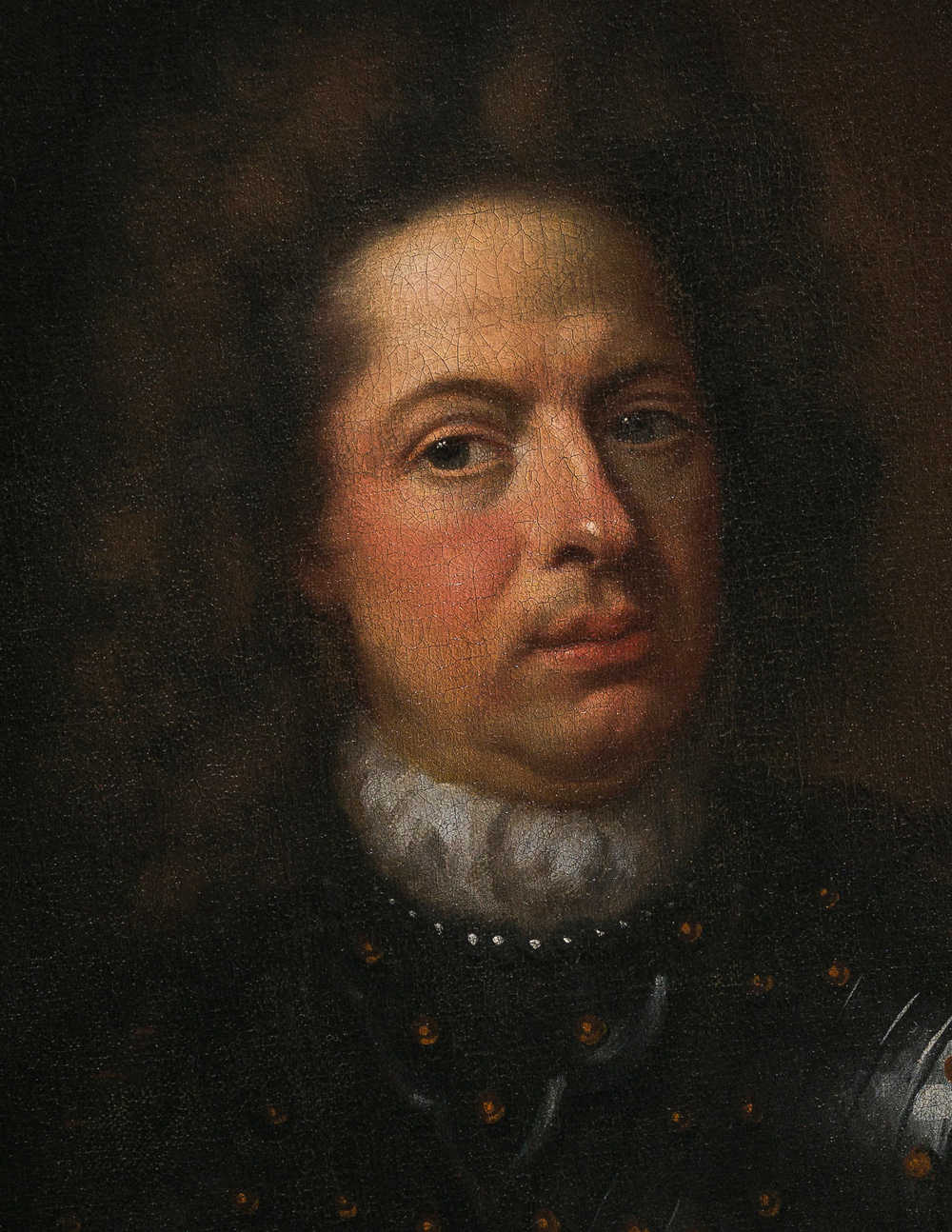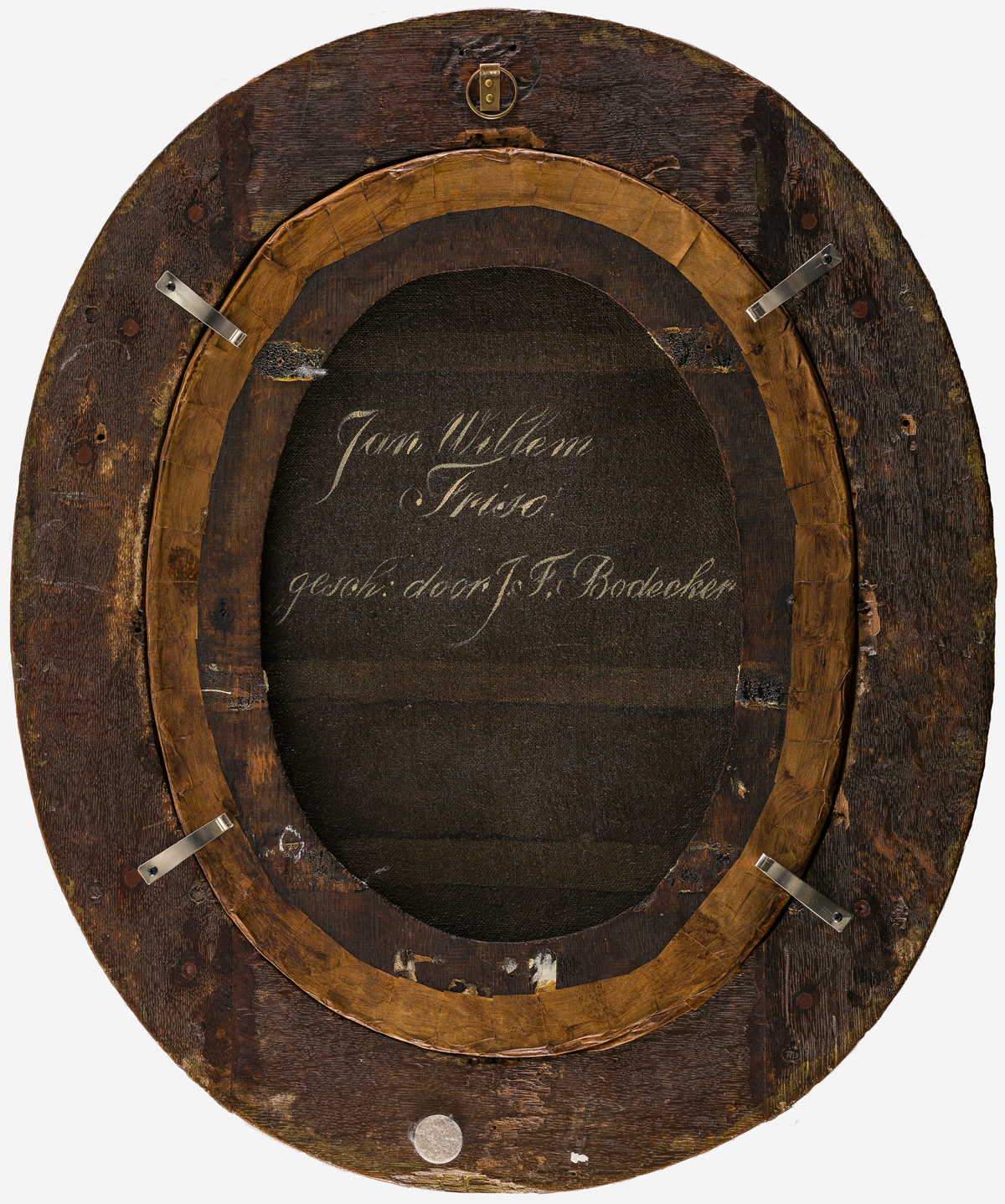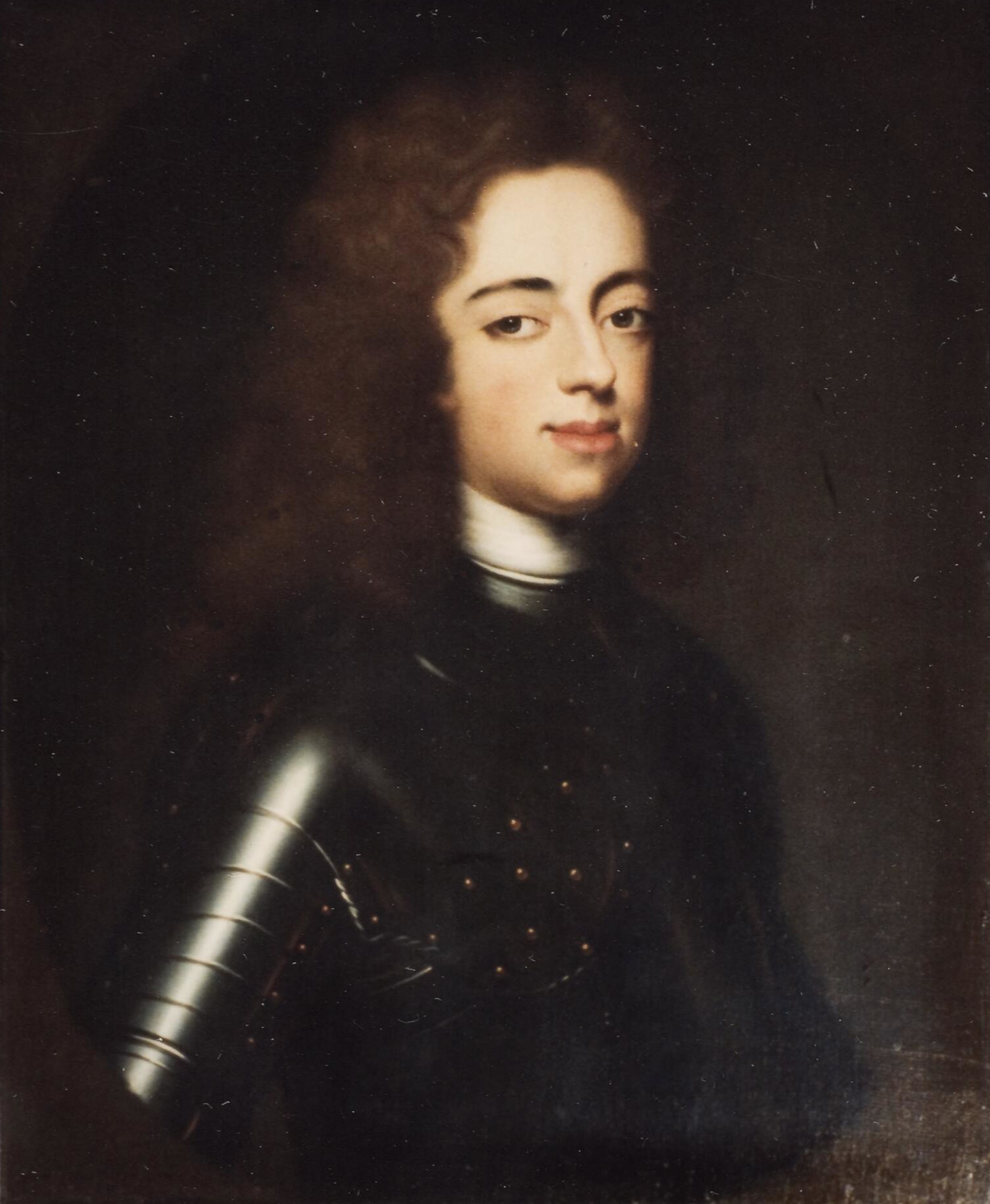JOHANN FRIEDRICH BODECKER (Berlin or Cleves c.1658/60 – 1727 Amsterdam)
Johann Friedrich Bodecker (Berlin or Cleves c.1658/60 – 1727 Amsterdam)
Portrait of Johan Willem Friso of Orange-Nassau (1687–1711)
Oil on canvas, oval, 41.7 x 32.4 cm; contained in the original carved and gilded oval frame
Signed (vaguely) ‘J.F. Bodecker’ (centre right)
Inscribed in white paint on the reverse of the canvas ‘Jan Willem / Friso. / gesch: door J.F. Bodecker’
Provenance
~ Anonymous sale, Christie’s, Amsterdam, 7 May 1997, no. 97, repr.
~ Private collection, The Netherlands
***
Johann Friedrich Bodecker is thought to have been born in Berlin or Cleves around 1660 as the son of the court musicial Bödekker, who worked for the Duke of Brandenburg.1 He was initially taught by his father, who was also an engraver, and was then apprenticed in The Hague to the society portraitist Jan de Baen in 1675. He was subsequently taught at the Confrerie Pictura, from which he was expelled from 1681 to 1684 due to membership arrears.2 Bodecker was an active traveller: around 1686 he was active in Amsterdam, in 1707 he became a member of the guild in Haarlem, in 1708 he had moved to Leiden, where he registered at the University, in 1711 he was in Breda, from 1711 to 1713 again in The Hague; in 1713 he had moved to Middelburg in Zeeland, where he became a member of the guild, in 1714 he was back in Leiden and by 1724 he was living in Amsterdam, where he remained for his final years.
Bodecker was active as an engraver of mezzotints, both after his own designs and examples by De Baen. However he most regarded for his refined and elegant portraits of members of the upper echalons of Dutch society. His portraits of Jan Ham van den Ende and his wife Sara Adriana Noodt of 1715 are preserved as part of the Instituut Collectie Nederland.3 An extensive series of portraits by Bodecker is furthermore preserved in the Ewoud en Elisabeth Gasthuis in Wijk-bij-Duurstede – originally consisting of nineteen portraits, of which twelve survive now.4
Johan Willem Friso was born in Dessau in 1687 and became Stadtholder of Friesland and Groningen in 1696 upon the death of his father.5 As the sole heir of his cousin Stadtholder-King William III, he inherited the title of Prince of Orange upon the latter’s death in 1702, thus becoming the head of the Orange-Nassau family. He married Maria Louise of Hessen-Kassel, known as Marijke Meu; he was succeeded by their son Willem IV (1711–1751).
The prince was portrayed at various stages in his life, by artists including Bernardus Accama I, Lancelot Volders and Johannes Vollevens II, including examples preserved in the collections of the Museum De Fundatie in Heino, the Stadhouderlijk Hof in Leeuwarden and the Stichting Historische Verzamelingen van het Huis Oranje-Nassau. A portrait of the prince at younger age by Bernardus Accama is in the collection of Museum Martena in Franeker (fig.).6 Our portrait would appear to show the Stadtholder towards the very end of his short life, and may indeed be one of the very last likenesses of him. The armour shown in the portrait illustrates the military activities of the prince: he was a general in the War of the Spanish Succession, and participated in the Battle of Malplaquet in 1709.
1. For the artist, see the biography in Saur Allgemeines Künstlerlexikon: die bildenden Künstler aller Zeiten und Völker, Munich 1992- , vol. 12 (1996), p. 68 and Edwin Buijsen and Charles Dumas (eds.), Haagse schilders in de Gouden Eeuw: het Hoogsteder lexicon van alle schilders werkzaam in Den Haag 1600-1700, The Hague 1998, p. 288.
2. For Bodecker’s German roots, see P. Knolle, ‘Duitse schilders in de Hollandsche school. Hun komst, verblijf en reputatie 1680-1820’, De achttiende eeuw 40 (2008), no. 1, p. 31-49; esp. p. 38, note 31.
3. Both oil on canvas, oval, 82 x 65 cm, inv. no. 231; Old master paintings. An illustrated summary catalogue. Rijksdienst Beeldende Kunst/The Netherlandish Office for the Fine Arts, Zwolle-Den Haag 1992, p. 45.
4. Oil on canvas, oval, 78 x 61 cm, T. Gelok, ‘Gestolen en gerestaureerde regenportretten’, Het Kromme-Rijngebied, tijdschrift van de Historische Kring 'Tussen Rijn en Lek' 45-4 (2011), pp.16-25, repr.
5. For the sitter, see Ronald de Graaf, Friso. Het tragische leven van Johan Willem Friso (1687-1711), Amsterdam 2021.
6. Oil on canvas, 74 x 61 cm.
